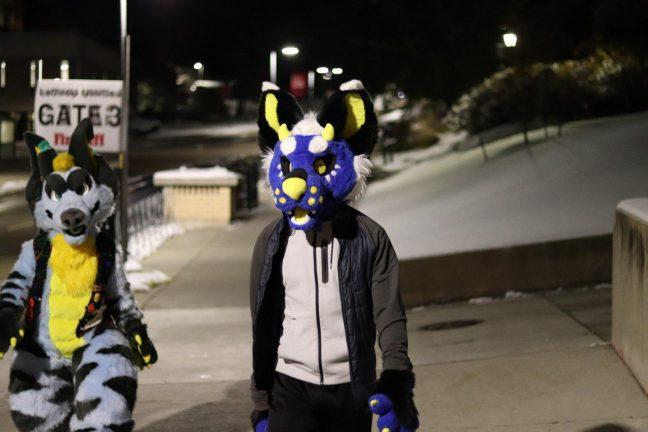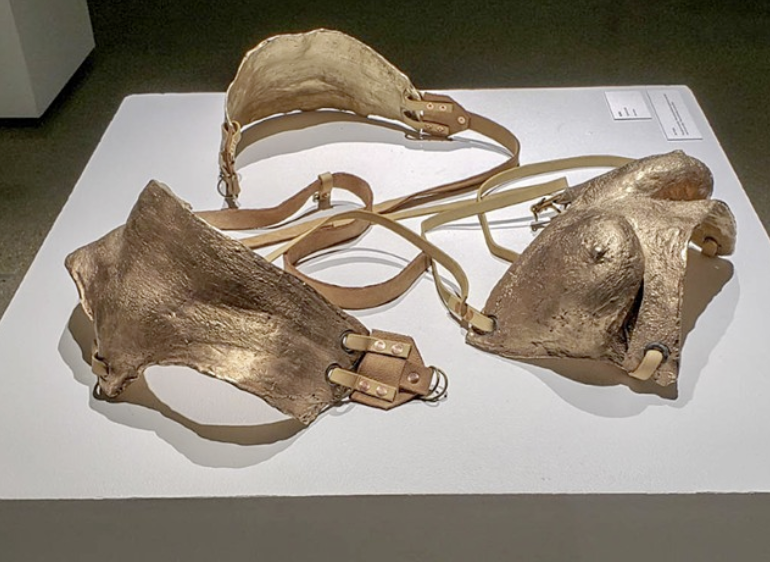The Wisconsin Involvement Network lists over 900 registered student organizations at the University of Wisconsin. Students on campus have hundreds of options to join groups that share their interests, from volunteer work to cultural organizations to specific hobbies. A brand-new org on campus now provides a space for a unique community — mostly grown online — on campus: furries.
The Wisconsin Organization of Furries, or WOOF, began last year after a few students wanted to unite the furry community at UW. Furries, as described in WOOF’s bylaws, are “people with a passion for anthropomorphic animals or mythical creatures.” Furries express their interest in characters that mix human and animal qualities through discussion, art, costumes and other creative activities.
The furry fandom has expanded over the past couple decades from a niche group to a worldwide community. WOOF formally organized at the start of the Fall 2019 semester, allowing individuals who previously interacted with the furry community online the chance to meet fellow members at UW.
SSFC discusses ethical protocols for allocating student fees
Max Harsch, an undergrad studying physics, is one of around 30 students who participated in the group this year. Before joining WOOF, Max found his way into the fandom through humorous curiosity.
“I was just browsing Reddit one day, and there was a link to a furry subreddit,” Harsch said.” I was like, ‘oh let’s go laugh at the furries.’”
Curiosity then led to appreciation.
“I spent 15 minutes and thought this was a neat community, there’s a lot of really good artists and talent,” Harsch said.
So far, WOOF has mostly been a casual way for UW furries to meet and greet. Members get together weekly for lunch, movie nights and video game tournaments. WOOF also has a Monday art night, where members are led by more talented artists in the group in a character-drawing exercise.
Creating characters is an important part of being a furry for many in the fandom. Some furries use a custom character as their ‘fursona,’ which can represent themselves either online or at certain in-person events. Fursonas are brought to life through drawings, online accounts and fursuits — costumes that allow furries to take on a character in an immersive way.
However, no furry creates their fursona the same way. Harsch created his fursona after discovering a fursuit online. Costing around $800 — a price relatively cheap in comparison to other fur suits — Harsch used the costume to create Velky, a blue-furred canine. Another WOOF member has a character named Mojito, a lion who exists only through drawings and descriptions.
Another important and iconic part of the furry fandom is conventions. Hundreds of furries will meet up with each other at hotel conferences organized by the community. WOOF members took part in AquatiFur in October, an annual convention at the Wisconsin Dells. AquatiFur and other furry conventions allow members to meet famous community members, join dance parties and more.
Harsch said he spent most of his time at the Dealer’s Den, the area where artists sell drawings and other self-made furry merchandise.
Wisconsin Science Festival encourages bridging of arts, sciences
Furries can be reluctant to talk about their hobby because of negative depictions of the fandom that have circulated in popular media and the press. News articles from the 90s and 2000s in Wired, Vanity Fair, and more, frame furries as social outsiders and claim the main purpose of the hobby is for sexual role play. Episodes of Tosh.0 and CSI: Crime Scene Investigations ridicule furries as well and depict them mostly as sexual deviants.
“It is kind of weird,” an anonymous member of WOOF said. “The community is very interesting and eccentric. It’s understandable why people might misunderstand furries.”
WOOF is aware of these preconceptions of furries. On the Wisconsin Involvement Network, the group notes that many people are not comfortable telling others they are a furry. One goal of WOOF is to offer insight on this niche community and clear up any misconceptions.
The image of furries has been changing, and various internet personalities have helped normalize the furry fandom in online spaces. Most recently, Forbes named Dominique “Sonicfox” McLean — an acclaimed fighting game pro player and avid community member who wears their fursuit to tournaments.
WOOF members hope the organization continues to be a means for furries to feel welcomed on campus and stay together.
“I hope it stays what it is now,” Harsch said.“It’s just a way for people to find other furries and hang out.”



















